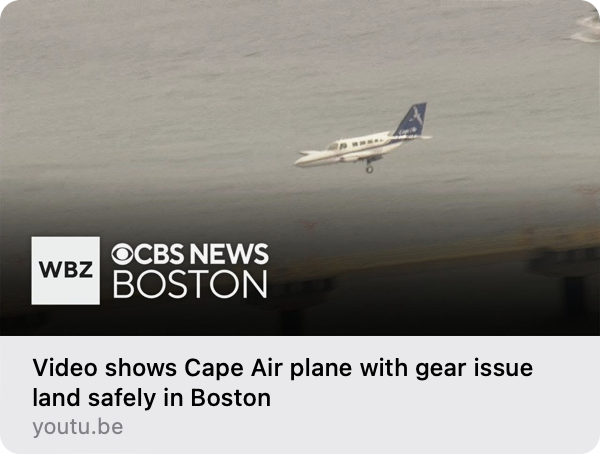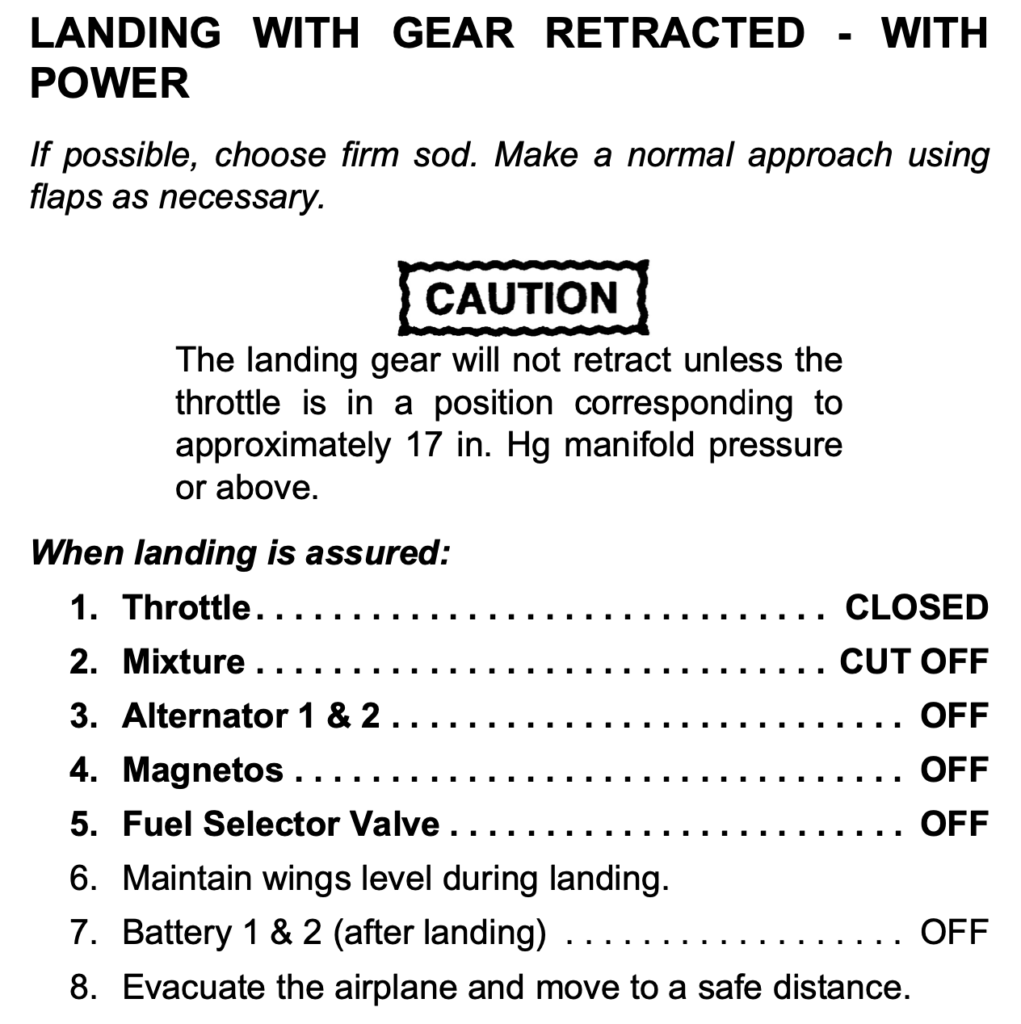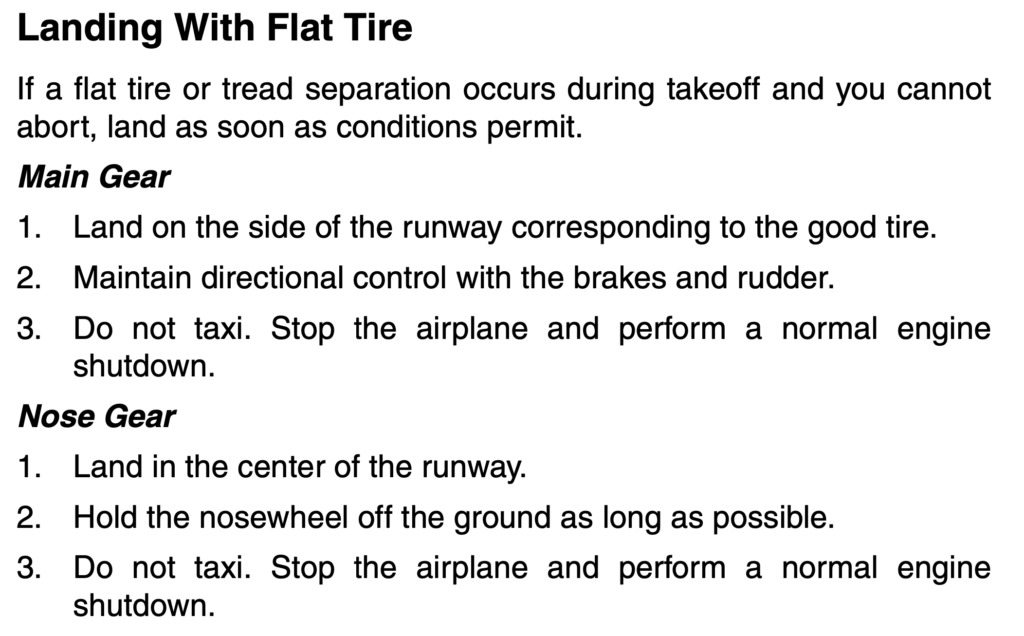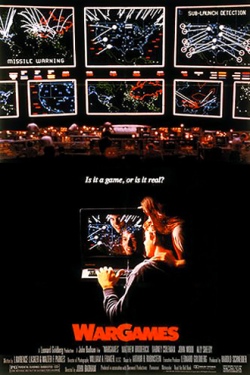
FLYING LESSONS uses recent mishap reports to consider what might have contributed to accidents, so you can make better decisions if you face similar circumstances. In most cases design characteristics of a specific airplane have little direct bearing on the possible causes of aircraft accidents—but knowing how your airplane’s systems respond can make the difference in your success as the scenario unfolds. So apply these FLYING LESSONS to the specific airplane you fly. Verify all technical information before applying it to your aircraft or operation, with manufacturers’ data and recommendations taking precedence. You are pilot in command and are ultimately responsible for the decisions you make.
FLYING LESSONS is an independent product of MASTERY FLIGHT TRAINING, INC.
Pursue Mastery of Flight™
This week’s LESSONS:
War Games
Widely circulated video of a Cessna 402 in scheduled air service landing at Boston’s Logan International Airport displays the pilots’ mastery of the aircraft in an abnormal condition that by its nature became a declared emergency. The video shows the pilot landed smoothly on the one wheel, perhaps intentionally left of centerline knowing the airplane would depart to the right when the right wing dragged on the ground. The captain kept the engines running to maintain maximum control during touchdown, resisting possible temptation to somehow “protect” the engines and propellers as is sometimes suggested in an intentional gear-malfunction landing.

It’s impossible to tell but it appears from the visible left propeller that the pilot shut down the engines as the airplane rolled and then slid along the runway. Although it seems like a long time between the airplane coming to rest and the clamshell door popping open for evacuation, it was a little less than a minute if the video’s timer indicates real time. Well done!
I’ve not gained access to a Cessna 402 Pilot’s Operating Handbook/Airplane Flight Manual (POH/AFM), but my friend Christian Pancake of the Twin Cessna Flyer organization relayed my question to Twin Cessna maintenance and technical legend Tony Paxton, who tells me:
For all models [there are] only emergencies stated in the POH, or [in the] owner’s manual if [the airplane was built] before the POH requirement timeframe. No abnormalities were specified. There is checklist for gear transit failure listed in the handbook.
For similar class airplanes I’ve found no Abnormal Procedures or Emergency checklists or (very handy in the Cessna manuals) Amplified Procedures section that suggests guidance for landing with only one wheel extended. A quick sampling of a few current and former airline pilots I know told me that air carrier airplanes don’t address the issue; the overriding philosophy appears to be that if all the gear legs are not down it’s preferred to get them all back up if able and make an intentional belly landing.
Some retractable gear airplanes have a checklist for an intentional gear up landing, like this sample from a G36 Bonanza:

Beech G36 emergency checklist
Some fixed gear airplanes, like the Cirrus SR22, have a checklist that provides hints for the Cape Air scenario: Landing With a Flat Tire:

Cirrus SR22 emergency checklist
Stay with me: Long-time readers of FLYING LESSONS know I have a somewhat unusual background in that I served four years as a Minuteman Intercontinental Ballistic Missile (ICBM) crew member and commander in the U.S. Air Force—one of the “hands on keys” guys and gals (there is no “button”). Always aiming for correlation—the highest level of learning—some of the best FLYING LESSONS I ever got took place 60 feet below ground level.
Young, educated and often bored, surrounded on three sides by barely-digital early ‘60s-era electrical equipment powered through multiple banks of circuit breakers, high-pressure pneumatics and even a few vacuum tubes, working in a highly regimented, highly regulated environment, and subject to a tricky and complex, overlapping series of Emergency War Orders (“EWO”), we had lots of time to think. One of the things we thought about a lot was unusual and undocumented ways equipment could interact, things could break, or scenarios could unfold. We called these lines of thought wargaming. For a couple years I shared a house with two squadron mates and we did this at home a lot too…a practice two of us may have regretted when the third became a crew evaluator!
How’s this apply to flying? Before the checklists in Section III, Emergency Procedures in most POHs/AFMs, the introductory text usually contains language like this:
[From a Beech G36 POH]: The following information is presented to enable the pilot to form, in advance, a definite plan of action for coping with the most probable emergency situations which could occur in the operation of the airplane. [From the Cessna C172S POH]: Should an emergency arise, the basic guidelines described in this section should be considered and applied as necessary to correct the problem. [From the Cirrus SR22 POH]: Although this section provides procedures for handling most emergencies and abnormal flight conditions that could arise…it is not a substitute for thorough knowledge of the airplane and general aviation techniques. A thorough study of the information in this handbook on the ground will help you prepare for time-critical situations in the air.
In other words, master the systems and procedures for your airplane through study, practice and formal training, then wargame scenarios not specifically addressed by Abnormal and Emergency Procedures checklists. Think about things that might happen, even wildly unusual scenarios, and correlate what you know into ways you might respond. Make a game of it with your friends (even pilot examiners!). At your next pilot meeting brainstorm two or three scenarios, come up with ways to deal with them, and compare similarities and differences between the models of aircraft your friends fly and see if you gain insights into your own.

Wargames was released in 1983 while I was on launch crew. The opening sequence is the most authentic representation of ICBM operations I’ve seen in movies (except the “nuclear fan fiction” of threatening your crew commander with your sidearm). “The only winning move is not to play.”
The pilot of that Cessna 402 didn’t have a printed procedure for dealing with a wildly unusual situation where only one gear leg was down. Watching the video, however, I have to think he/she was skilled at correlating general and aircraft-specific knowledge to choose a course of action that resulted in a safe outcome.
Despite the copious information and checklists in a POH/AFM, there will always be situations they don’t address. Prepare for the unusual by mastering the available checklists and correlating them with your systems knowledge as you wargame innovative responses.
Questions? Comments? Supportable opinions? Let us know at [email protected].

Debrief
Readers write about past FLYING LESSONS
Reader and long-time multiengine instructor Dave Dewhirst writes about last week’s LESSONS on The Propeller Unfeathering Trap:
Great article on feathering. I suggest one additional point on unfeathering accumulators be made. I am a firm believer in using accumulators to the point I suggest the system be added if not already installed. Sure, it is expensive and adds weight, but having the system is a safety advantage. If the system was installed and been disabled or has been removed, reinstall it.
I suggest you point out the accumulator consists of a rubber diaphragm separating the trapped oil under pressure and a nitrogen charge. The nitrogen charge is what pushes the trapped oil back into the propeller dome. The problem is the nitrogen charge can leak out. In normal operation the pilot will not know that has happened until he discovers the accumulator feature is not available. For that reason, we teach a procedure on the before-takeoff check to pull both prop levers toward the feather position at the same time, not individually. The one slow to come out of feather is the accumulator that has lost its charge. Unless both prop levers are moved at the same time, there is no comparison of the function.
I learned the same Before Takeoff unfeathering accumulator test while instructing at Beech Field in the early 1990s and continue to present it to this day. I understand your desire to have accumulators installed because you’re in the business of providing transition training to pilots in piston multiengine airplanes—that makes sense. The major point of last week’s LESSON, however, is that outside of training there is virtually no scenario in which a pilot shuts down an engine and feathers its propeller and then attempts to restart that engine—and that there is a serious hazard to overcome if you try. Thank you, Dave.
More to say? Let us learn from you, at [email protected]

Please help cover the ongoing costs of providing FLYING LESSONS through this secure PayPal donations link. Or send a check made out to Mastery Flight Training, Inc. at 247 Tiffany Street, Rose Hill, Kansas USA 67133. Thank you, generous supporters.
Thank you to our regular monthly financial contributors:
Steven Bernstein, Montclair, NJ. Robert Carhart, Jr., Odentown, MD. Randy Carmichael, Kissimmee, FL. Greg Cohen, Gaithersburg, MD. John Collins, Martinsburg, WV. Paul Damiano, Port Orange, FL. Dan Drew. Rob Finfrock, Rio Rancho, NM. Norman Gallagher. Bill Griffith, Indianapolis, IN. Steven Hefner, Corinth, MS; Ellen Herr, Ft Myers, FL. Erik Hoel, Redlands, CA. Ron Horton. Robert Hoffman, Sanders, KY. David Karalunas, Anchorage, AK. Steve Kelly, Appleton, WI. Karl Kleiderer. Greg Long, Johnston, IA. Rick Lugash, Los Angeles, CA. Richard McCraw, Hinesburg, VT. David Ovad, Resiertown, MD. Steven Oxholm, Portsmouth, NH. Brian Schiff, Keller, TX. Paul Sergeant, Allen, TX. Ed Stack, Prospect Heights, IL; Paul Uhlig, Wichita, KS. Richard Whitney, Warrenton, VA. Jim Preston, Alexandria, VA. Johannes Ascherl, Munich, Germany. Bruce Dickerson, Asheville, NC. Edmund Braly, Norman, OK. Steven Hefner. Lorne Sheren, New Vernon, NJ. “The Proficient Pilot,” Keller, TX.
And thanks to these donors in 2024:
Jim Lara, Joseph Stadelmann, Dixon Smith, Barry Warner, Wayne Mudge, Joseph Vandenbosch, Ian Campbell, Jay Apt, John Kimmons, Derek Rowan, Michael Maya Charles, Ron Horton, Lauren McGavran, Gerald Magnoni, Amy Haig, Rod Partlo, Brent Chidsey, Mard Sasaki-Scanlon, SABRIS Aviation (Dave Dewhirst), Edmund Braly, Joseph Orlando, Charles Lloyd, Michael Morrow, Abigail Dang, Thomas Jaszewski Danny Kao, Gary Garavaglia, Brian Larky, Glenn Yeldezian, David Yost, Charles Waldrop, Robert Lough. Gilbert Buettner. Panatech (Henry Fiorientini). Dale Bleakney. Mark Kolesar. John Winter. Donald Bowles. David Peterson. Bill Abbatt. Bruce Jacobsen. Denny Southard. Wayne Cloburn. Ross Ditlove. “Bonanza User”
Pursue Mastery of Flight(TM)
Thomas P. Turner, M.S. Aviation Safety
Flight Instructor Hall of Fame Inductee
2021 Jack Eggspuehler Service Award winner
2010 National FAA Safety Team Representative of the Year
2008 FAA Central Region CFI of the Year
FLYING LESSONS is ©2024 Mastery Flight Training, Inc. For more information see www.thomaspturner.com. For reprint permission or other questions contact [email protected].

